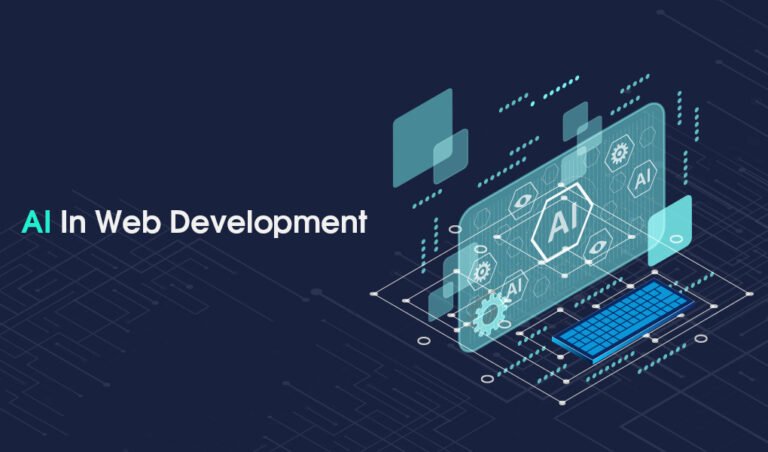As we approach 2026, website development is undergoing a profound transformation driven by emerging technologies and evolving user expectations. Today, we’re exploring the revolutionary approaches and technologies that are redefining how digital experiences are created, delivered, and experienced. At Autodesk, we’re not just observing these trends—we’re actively integrating them into our development practices to create more powerful, intuitive experiences for our customers across the AEC, manufacturing, and media industries.
AI-Powered Development: Beyond Templates and Frameworks
The traditional website development process is rapidly evolving as AI systems become active participants in the creation process, handling increasingly complex aspects of both design and development while enabling human creators to focus on strategy and innovation.
“We’ve moved beyond AI as just an assistant to what we call ‘collaborative intelligence,'” explains Jason Park, VP of Web Technology at Autodesk. “Our development systems now function as true partners in the creation process, handling technical implementation and optimization while our human teams focus on creative direction and user experience strategy.”
Generative Code Architecture
The most advanced development platforms now generate, test, and optimize code structures based on high-level objectives and constraints. These systems can produce complete technical implementations from conceptual inputs, with human developers providing guidance and refinement rather than writing code from scratch.
Predictive User Experience Design
AI systems can now analyze user behavior patterns across millions of interactions to predict which design approaches will be most effective for specific objectives and audiences. These insights enable the automatic generation of personalized interfaces tailored to individual users’ preferences and behaviors.
Dynamic Experience Optimization
Websites now continuously evolve in response to user behavior, with AI systems automatically testing and implementing refinements to navigation, content presentation, and functionality. This perpetual optimization process ensures that digital experiences become more effective and intuitive over time.
Spatial Web Development: Beyond Flat Interfaces
As web technologies mature beyond two-dimensional paradigms, developers are creating immersive digital environments that fundamentally change how users interact with information and services.
Volumetric Web Experiences
The evolution of WebXR and spatial computing technologies has enabled the development of three-dimensional web environments that users can navigate and interact with intuitively. These experiences maintain the connectivity and accessibility of the web while providing immersive spatial interactions previously limited to native applications.
Context-Aware Environments
Advanced spatial web experiences adapt dynamically to users’ physical environments and contexts. Content, interfaces, and functionality transform based on factors like location, surrounding objects, time of day, and available display surfaces.
“Spatial web development has transformed how we present complex products like our AEC and manufacturing solutions,” notes Park. “Customers can now explore product capabilities within spatially anchored interfaces that adapt to their physical workspace, creating a blended reality experience that makes complex functionality more intuitive.”
Multi-sensory Interface Design
Leading-edge web experiences now incorporate multiple sensory channels, including spatial audio, haptic feedback, and even olfactory elements through connected devices. Development frameworks have expanded to orchestrate these multi-sensory components into cohesive experiences.
Composable Architecture: Beyond Traditional Frameworks
Website architecture has evolved from monolithic applications to highly modular, composable systems that can be assembled, disassembled, and reconfigured with unprecedented flexibility.
Autonomous Micro-Experiences
Websites are increasingly built from independent, self-contained functional units that can be deployed, updated, and scaled independently. These micro-experiences include their own logic, data, and interface elements while maintaining consistent experience patterns.
API-First Development
The most advanced web architectures are now built entirely around robust API ecosystems, with every functionality available as a service that can be combined and reconfigured. This approach enables rapid innovation and seamless integration with emerging technologies and platforms.
Edge-Native Computing
Website functionality has moved beyond centralized servers to distributed edge computing networks, with logic executing as close as possible to end users. This architecture delivers near-instantaneous performance while reducing bandwidth requirements and environmental impact.
Ambient Intelligence Integration
As computing becomes increasingly embedded in everyday environments, website development has expanded to incorporate ambient computing touchpoints beyond traditional screens.
Omni-Surface Experiences
Advanced web architectures now seamlessly extend across multiple surfaces and devices, from traditional screens to smart displays, projected interfaces, voice-activated systems, and wearable technology. Content and functionality flow naturally between these contexts without requiring explicit user actions.
Environmental Computing Integration
Websites can now interact directly with smart environment systems, intelligently adapting presentation and functionality based on environmental conditions like lighting, sound levels, or occupancy. This environmental awareness creates more contextually appropriate and effective user experiences.
Zero UI Interaction Patterns
Many web experiences now incorporate “zero UI” interaction patterns that minimize or eliminate traditional interface elements, instead relying on voice, gesture, or predictive systems that anticipate user needs and provide information without explicit requests.
Sustainability-Driven Development
Environmental impact has become a fundamental consideration in website development, influencing technology choices, design approaches, and performance optimization.
Energy-Aware Rendering
Modern web development frameworks automatically optimize rendering processes to minimize energy consumption based on device capabilities, connection type, and battery status. These optimizations significantly reduce the carbon footprint of digital experiences while maintaining performance.
Carbon-Efficient Architecture
Website architectures are now designed with environmental impact as a primary consideration, with automated systems selecting the most energy-efficient service providers, optimizing data transfer, and minimizing unnecessary computation.
Sustainability Transparency
Leading organizations now provide real-time visibility into the environmental impact of their digital properties, displaying carbon metrics directly within experiences and documenting the sustainability measures implemented in their development processes.
Real-World Impact: Case Studies from Leading Organizations
At Autodesk, we’ve already implemented several of these next-generation web development approaches with impressive results:
AEC Industry Platform
Our spatial web implementation for AEC professionals created an immersive project environment where teams can collaborate within a three-dimensional representation of their building information models. This approach increased cross-discipline collaboration effectiveness by 35% and significantly reduced coordination issues compared to traditional 2D interfaces.
Manufacturing Solutions Hub
Our composable micro-experience architecture for manufacturing customers allows them to assemble personalized dashboards from modular functional components. This approach increased feature discovery by 40% and improved user satisfaction scores by providing exactly the tools each user needs without interface clutter.
Preparing Your Web Development Strategy for 2026
As these technologies and approaches mature, organizations should consider several key steps:
- Invest in AI-augmented development capabilities that empower your teams to work collaboratively with intelligent systems
- Explore spatial computing technologies appropriate for your specific use cases and user needs
- Transition to composable architecture that enables greater flexibility and future-proofing
- Develop an environmental impact strategy for your digital properties and development practices
- Build expertise in multi-sensory and ambient computing to prepare for the next evolution of digital experiences
“The organizations that will thrive in this new era are those that embrace these technological advances while maintaining a relentless focus on human needs and experiences,” says Park. “Despite all these innovations, the fundamental purpose of web development remains unchanged—to connect people with information and capabilities that genuinely improve their lives and work.”





